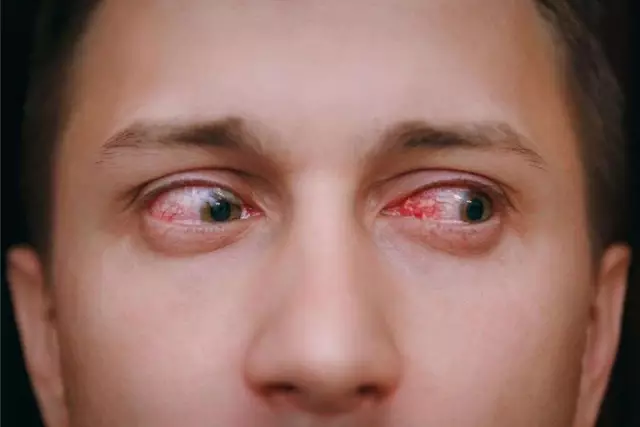- Author Rachel Wainwright [email protected].
- Public 2023-12-15 07:39.
- Last modified 2025-11-02 20:14.
Phlegmon

Phlegmon is an inflammatory, purulent disease of adipose tissue. The name of the disease comes from the Greek word flegmone, which literally means inflammation, fever. Phlegmon can form almost anywhere in the body. A characteristic feature of phlegmon is its localization in the fatty tissue. In any corner of the human body, where there are fat cells, there is a risk of phlegmon in the event of adverse circumstances.
The type of localization of phlegmon can be widespread or limited. With a reduced immune response of the body and with a progressive type of phlegmon, purulent inflammation has no clear boundaries. The cavities filled with pus quickly capture large areas of the subcutaneous tissue, in some cases forming necrotic areas.
Types of phlegmon
Experts subdivide phlegmons into primary and secondary.
With the direct penetration of pathogenic microbes into the bloodstream through the damaged skin surface, primary phlegmon are formed. Secondary phlegmon occur in cases where the inflammatory process spreads from existing chronic foci of infection (for example, pleurisy, osteomyelitis, etc.).
There is a large list of phlegmons classified according to the site of localization, since the disease, as mentioned above, can occur absolutely anywhere where there is subcutaneous fat (intermuscular, perirenal, subcutaneous, etc.).
1. Phlegmon of the neck
Abscesses and phlegmon of the neck belong to the category of diseases, the course of which is unpredictable, and the consequences can be the most severe and even life-threatening for the patient. In most cases, the source of a pathogenic infection with phlegmon of the neck are inflammatory processes in the oral cavity and pharynx - pharyngitis, laryngitis, chronic dental caries, etc. diseases.
Superficial abscesses and phlegmon of the neck most often occur over the deep cervical fascia and therefore they do not pose a particular danger, since they are easily accessible for surgical opening. Most of the phlegmon of the neck are localized in the chin and submandibular regions. The clinical picture with this type of phlegmon is as follows: the general temperature rises to 39 degrees Celsius, the patient feels severe headaches, general weakness and malaise. A laboratory blood test indicates an increased white blood cell count. In the absence of timely treatment, phlegmon progresses, and the inflammation spreads to the large veins of the facial area, there is also a risk of purulent meningitis.
2. Phlegmon brush
Disease of the phlegmon of the hand is localized in the deep subcutaneous spaces of the hand, inflammation is caused by the ingestion of a pyogenic infection through wounds, cuts and scratches - by streptococci or staphylococci.
Experts distinguish the following subtypes of hand phlegmon:
- on the dais of the thumb;
- the median palmar region;
-

phlegmon in the form of a cufflink.
Purulent inflammation can form anywhere in the carpal space with further spread to the back of the hand. The patient feels severe pain with pulsation, there is significant tissue edema and sharp pain on palpation. Treatment of phlegmon of the hand consists in the surgical opening of a purulent focus, cleaning out its contents and draining the wound cavity. After the operation, the patient is prescribed antibiotic therapy using drugs, usually of the cephalosporin series.
3. Phlegmon of the face
Another severe subspecies of the disease is facial phlegmon. The favorite places of localization of this type of phlegmon are in most cases located near the jaws, in the temporal region, under the chewing muscles, etc.
With phlegmon of the face, there is an increase in the general body temperature to extreme marks (40 degrees Celsius and above), tachycardia, there is a strong swelling of tissues, a violation of swallowing and chewing functions. A laboratory blood test shows a significant increase in the number of leukocytes.
Patients with suspected facial phlegmon should be immediately hospitalized in a specialized medical facility (dental surgery). In the absence of treatment for facial phlegmon, the prognosis is always extremely unfavorable.
YouTube video related to the article:
The information is generalized and provided for informational purposes only. At the first sign of illness, see your doctor. Self-medication is hazardous to health!






